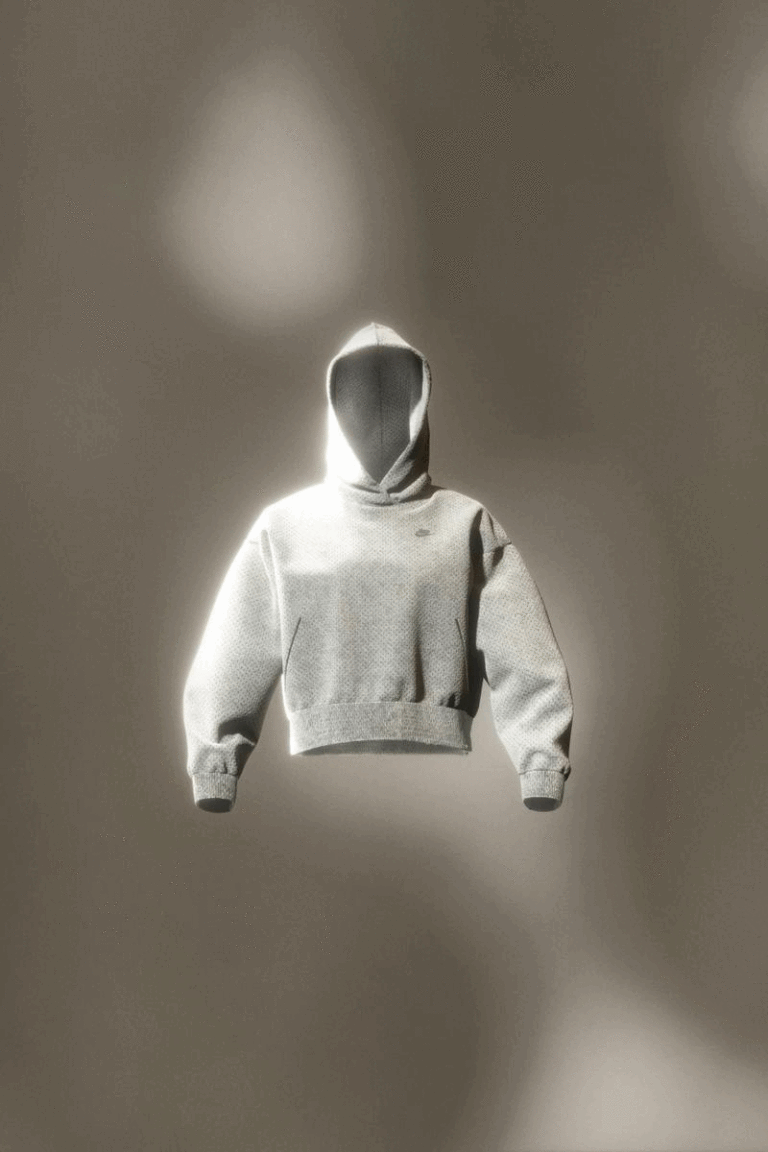
The Nike hoodie is a ubiquitous symbol of the Just Do It attitude for athletes and a gateway into the brand for consumers around the world.
It’s made from fleece, a cheap input commonly made of high-impact polyester or other synthetic fibers. But starting Thursday, the sneaker giant will debut products made under Nike Forward, a new platform that reduces the carbon footprint of first-generation material by an average of 75 percent compared to traditional Nike fleece.
Nike Forward material, which is launching as a classic grey sweatshirt available in a hoodie or crew style, joins the Oregon company’s ecosystem of sustainability initiatives like Nike Air, Flyknit, Flyleather, Space Hippie, and Next Nature. It also fits within the conglomerate’s broader “Move to Zero” initiative, which went into effect in 2019 and ventures to make it zero carbon and zero waste.
The new material is created through a method that simplifies the fabrication process by reducing steps, according to Nike. Most fabrics, from sweaters to thin tees, are woven or knit together in a grid pattern. Nonwovens, like felts and Nike Forward’s new material, skip this intensive step and are joined together through alternative methods like heat, pressure, or, in this case—needle punching.
Needle-punch fabrication is not new, however, Nike says it “hacked the punch-needle machines for the purpose of making a premium, sustainability-minded product with a diverse range of layers that can be precisely tuned for different needs.” The company didn’t respond to multiple requests for comment about how Nike Forward would fit into its existing supply chain.
While Nike Forward material still uses synthetics, it was engineered with circularity in mind. Notably, it has a lighter density than traditional knit fleece, which helps with carbon reduction, and is made of 70 percent recycled content coming from industrial and post-consumer waste. With only 14 percent of apparel made from recycled fibers today, Nike’s material innovation seems to be a step in the right direction.
Furthermore, the first fleece iterations of what will likely become a full lineup of Nike Forward products are made without zippers, aglets, or extra trims, making it easier for the garments to be upcycled or recycled at the end of life. The sweatshirt also forgoes embellishments and dyes and boasts zero water usage.
“This is the biggest Nike apparel innovation since Dri-Fit 30 years ago and has huge potential to transform the industry in the way that Air and Flyknit did for Nike footwear,” said Aaron Heiser, Nike, Inc.’s VP of global apparel product merchandising, in a statement.
For now, Nike Forward material is exclusive to apparel, but if Flyknit’s move from shoes to clothes is any signal, footwear may be on the horizon.
Starting Sept. 15, Nike Forward crew and hoodie styles will be available through Nike.com and the Nike app.